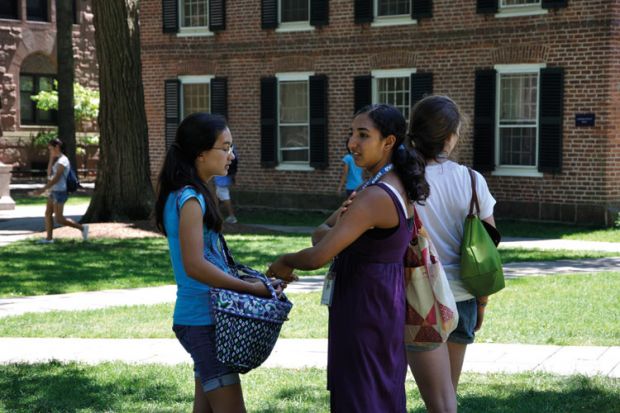Source: Alamy
This is according to the annual National Survey of Student Engagement, published today, which surveys more than 355,000 first-year and senior students attending 622 colleges across the US.
“Institutions that look reasonably similar - in size, context, student body demographics, programs, and so on - nevertheless are sometimes quite different when it comes to student engagement,” writes Muriel Howard, president of the American Association of State Colleges and Universities in the report’s foreword.
Alexander McCormick, associate professor of educational leadership and policy studies at Indiana University Bloomington and director of the NSSE, adds that the findings “challenge the conventional wisdom that certain characteristics of colleges and universities assure a high-quality educational experience”. He points to “six features that unusually successful institutions” have in common, identified in the report.
These are: a “living” mission and “lived” educational philosophy; an unshakeable focus on student learning; environments adapted for educational enrichment; clear pathways to student success; an improvement-oriented ethos; and a shared responsibility for educational quality and student success.
“The authors describe a ‘positive restlessness’ at these institutions wherein student success is always at the top of the agenda, promoting and supporting that success is everyone’s job, and continuous improvement is informed by data,” Professor McCormick says.
The report also reveals that one in three first-year students in the US rarely meet with an adviser despite such meetings being positively linked with perceptions of the campus environment by students of all backgrounds.
“These findings suggest the need for special outreach efforts for students who may have limited opportunities to take advantage of advising or who may be disinclined to do so,” the report concludes.
In addition, the survey finds that about two in five first-year US students and a third of seniors (those in their final year of college) report that social media substantially distracts them from their coursework. While it was common for institutions to use social media to help students connect with student groups, organisations, and other students, they were less often used social media to provide students information about educational or career opportunities, financial aid, or to help students connect with faculty.
“Institutions can no longer promote student success by adhering to a set of expectations for students who have historically succeeded in higher education,” concludes Dr Howard. “In the 21st century, institutions are going to have to change to meet the needs of our students. And that change means cultural change. That is the leadership work we must now embrace.”




